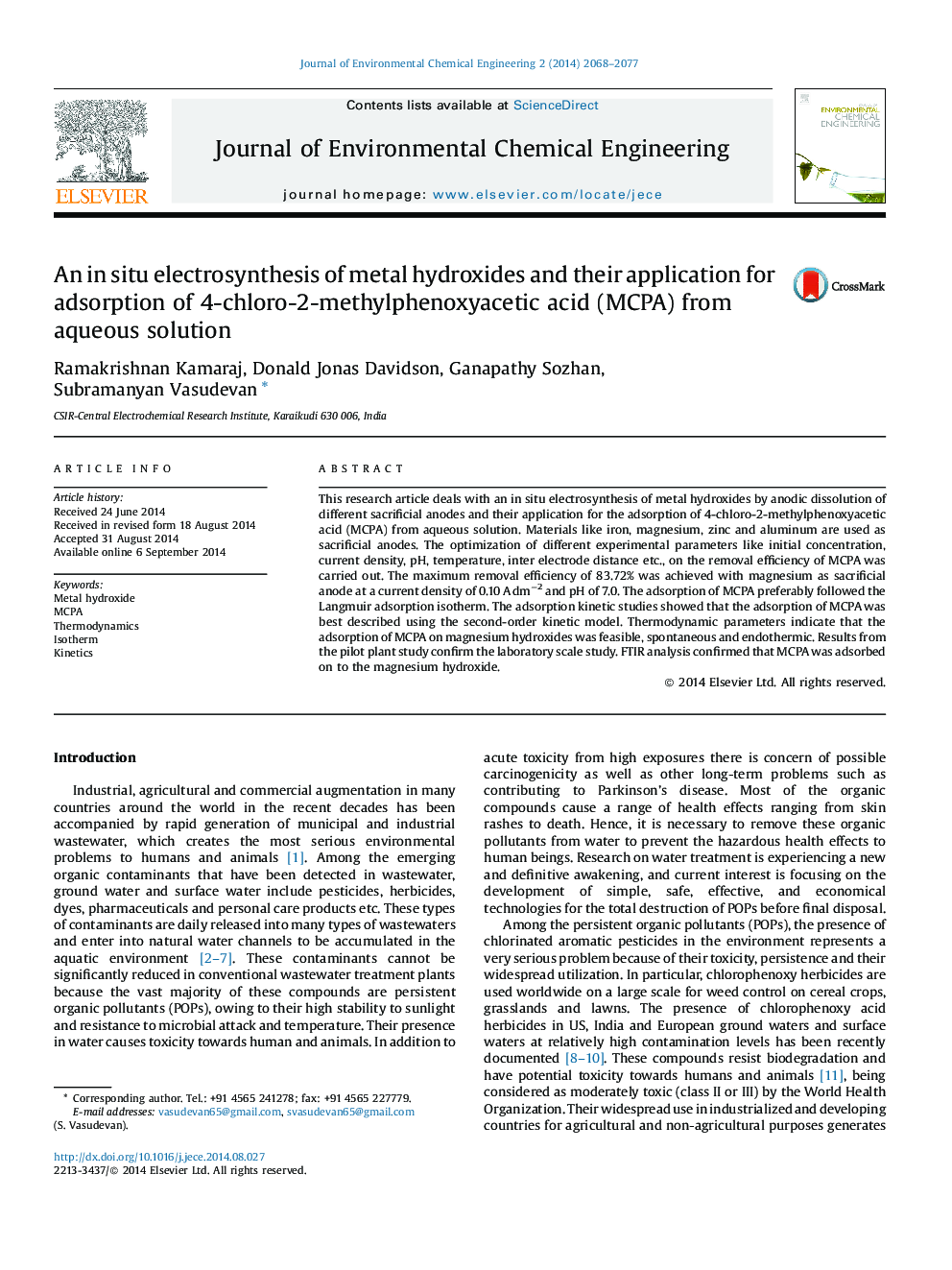| Article ID | Journal | Published Year | Pages | File Type |
|---|---|---|---|---|
| 221816 | Journal of Environmental Chemical Engineering | 2014 | 10 Pages |
•MCPA was removed efficiently by in situ prepared magnesium hydroxide.•Maximum adsorption efficiency of 83.72% was achieved.•Adsorption equilibrium follows pseudo-second-order model.•Equilibrium data were well described by the typical Langmuir adsorption isotherm.•Thermodynamic studies revealed that the adsorption reaction was spontaneous.
This research article deals with an in situ electrosynthesis of metal hydroxides by anodic dissolution of different sacrificial anodes and their application for the adsorption of 4-chloro-2-methylphenoxyacetic acid (MCPA) from aqueous solution. Materials like iron, magnesium, zinc and aluminum are used as sacrificial anodes. The optimization of different experimental parameters like initial concentration, current density, pH, temperature, inter electrode distance etc., on the removal efficiency of MCPA was carried out. The maximum removal efficiency of 83.72% was achieved with magnesium as sacrificial anode at a current density of 0.10 A dm−2 and pH of 7.0. The adsorption of MCPA preferably followed the Langmuir adsorption isotherm. The adsorption kinetic studies showed that the adsorption of MCPA was best described using the second-order kinetic model. Thermodynamic parameters indicate that the adsorption of MCPA on magnesium hydroxides was feasible, spontaneous and endothermic. Results from the pilot plant study confirm the laboratory scale study. FTIR analysis confirmed that MCPA was adsorbed on to the magnesium hydroxide.
Graphical abstractFigure optionsDownload full-size imageDownload as PowerPoint slide
